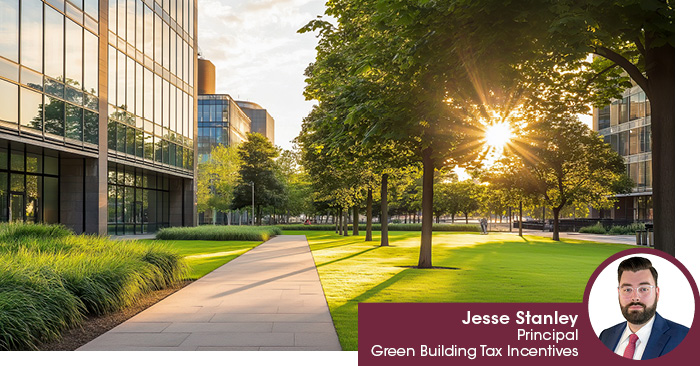By Jesse Stanley | Principal, Green Building Tax Incentives
As policymakers continue to discuss tax priorities, 179D candidates—particularly architects, engineers, and other designers—face growing uncertainty around the future of this powerful deduction. With potential legislation threatening to scale back benefits, design professionals who rely on 179D to demonstrate value and reduce taxable income should consider acting now.
KBKG Insight:
Architects, engineers, and other designers have significantly benefited from existing legislation. With possible tax reform on the horizon, taxpayers should consider capitalizing on the current law, which can result in design firms obtaining over $5 per square foot in tax deductions, as tax reform may reduce benefits to pre-2021 levels or eliminate them altogether. Time is of the essence.
179D History
First introduced as part of the Energy Policy Act in 2005, the 179D Tax Deduction aims to help reduce energy consumption in commercial buildings. Over the years, Congress, on a bipartisan effort, continued to extend 179D and its provisions, ultimately becoming a permanent part of the U.S. tax code under the Consolidated Appropriations Act (CAA) of 2021, which the first Trump administration signed into law on December 27, 2020.
Originally worth up to $1.80 per square-foot, 179D allowed designers of government-owned buildings to receive allocations and claim the benefits for themselves. Eligible projects are ones that improve a building’s sustainability by designing energy-efficient HVAC, interior lighting, or building envelope systems. The building’s energy consumption must meet ASHRAE standards, which is modeled by IRS-approved software.
179D Today
In 2022, 179D was modified as part of the Inflation Reduction Act (IRA), with benefits increasing beyond $5 per square-foot. The IRA also expanded 179D eligibility to many other kinds of tax-exempt and non-profit buildings, like private schools and religious facilities. This allowed designers to receive allocations on many other projects that had not previously been eligible.
Prior to the IRA, architects, engineers, and other designers were only able to receive 179D allocations for work on government-owned buildings. However, beginning in 2023, these designers could now claim 179D for qualifying designs of tax-exempt entities, including nonprofit organizations.
The IRA also introduced requirements for Prevailing Wage and Apprenticeship usage for projects to achieve the largest benefits of $5 per square-foot and beyond. This requirement, however, could reduce the impact of 179D to a maximum of $1 per square-foot for projects that don’t meet these requirements on construction start dates after January 29, 2023. This requirement could also be removed as a part of a legislative roll back to 179D as it existed in the CAA.
Benefits for Commercial Building Owners
By investing in the same energy-efficient systems (HVAC, interior lighting, building envelope), taxpaying Commercial Building Owners (CBO) can also reap the benefits of 179D. Rather than depreciating energy-efficient improvements over time, CBOs can claim 179D and deduct their costs upfront, reducing their overall tax liability.
Conclusion
If 179D is rolled back to its previous version, as dictated under the CAA, design firms and CBOs could lose out on huge tax savings for eligible projects in future tax years. Candidates with qualifying work are encouraged to take advantage of the program as it stands today, which would result in earning deductions as high as $5.65 per square-foot for buildings completed in 2024. Consulting with trusted tax consultants and 179D experts, like KBKG, can help navigate the complexities of 179D and maximize the rewards that are claimed on tax returns.
See if You Qualify Today
About the Author
Jesse Stanley | Principal – Green Building Tax Incentives
Jesse Stanley, P.E. is a Principal and oversees KBKG’s Green Building Tax Incentives, including the 179D Tax Deduction and the 45L Tax Credit. He has spent over a decade helping Architects, Engineers, and Design Build Contractors, claim the 179D Energy Efficient Commercial Building Tax Deductions for their new and existing building projects across over 2 billion square feet of commercial building space… Read More



